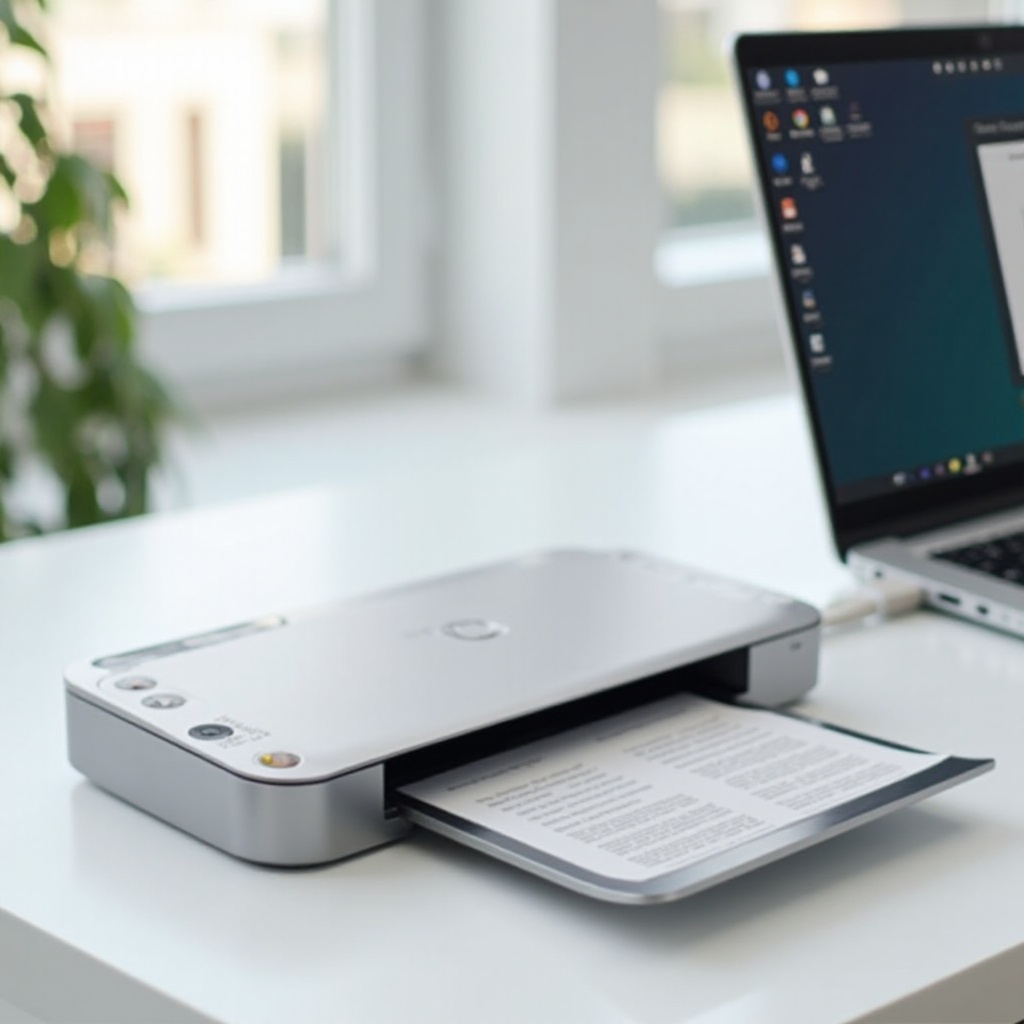Introduction
Scanning documents directly to your Chromebook using a Canon scanner is a straightforward process that can save you a lot of time. With a few simple steps, you can scan documents, photos, and other items without the need for a traditional computer. This guide will walk you through the entire process, from understanding compatibility to troubleshooting common issues. By the end of this article, you’ll be able to scan on Chromebook with Canon effortlessly.

Understanding Compatibility
Before you begin the process of scanning with a Canon scanner on your Chromebook, it’s important to ensure that your devices are compatible. Not all scanners and Chromebooks work together seamlessly, so this step is crucial to avoid any future inconveniences.
Chromebooks generally support a limited range of peripherals compared to traditional laptops. Canon provides a list of compatible devices on their official website, which is a great place to start. Ensure your Canon scanner is on this list to avoid compatibility issues later on. Additionally, certain software and drivers are often necessary to bridge any gaps between the hardware and the operating system.
Once you’ve confirmed compatibility, you can proceed confidently knowing that your Chromebook and Canon scanner can work together without any major issues.

Setting Up Your Canon Scanner
Setting up your Canon scanner is the foundational step before you can start scanning. Follow these steps:
- Unbox your scanner: Remove the Canon scanner from its packaging and make sure all components and cables are included.
- Connect power: Plug the power cord into the Canon scanner and connect it to a power outlet. Ensure the device is getting power.
- Install scanner drivers: While Chromebooks generally handle drivers internally, for some Canon scanners, you may need to manually download drivers. Visit Canon’s official website, search for your scanner model, and download the required drivers or software.
- Calibration: Some Canon scanners require calibration before first use. Follow the setup guide provided with your scanner to complete this process.
Once your Canon scanner is properly set up and drivers are installed, you’re ready to connect it to your Chromebook.
Connecting Your Canon Scanner to Chromebook
Now that your Canon scanner is set up, it’s time to connect it to your Chromebook. Here’s how you can do it:
- USB Connection: If you’re using a USB cable, simply connect one end to your scanner and the other to your Chromebook’s USB port. Chromebooks usually detect USB devices automatically.
- Wireless Connection: If your Canon scanner supports Wi-Fi, make sure both your scanner and Chromebook are connected to the same network. Follow the scanner’s manual to enable and connect it to Wi-Fi.
- Bluetooth Connection: For Bluetooth-compatible Canon scanners, turn on Bluetooth on both the scanner and Chromebook. Pair the devices by following the on-screen instructions on both devices.
Once your Canon scanner is connected to your Chromebook, you can proceed to the next step: scanning.
Scanning Process
The scanning process on a Chromebook is simple. Follow these instructions:
- Open the Scan App: Chromebooks have a pre-installed app called ‘Scan’. Open this application from the Launcher.
- Select Scanner: The Scan app will automatically detect connected scanners. Select your Canon scanner from the list.
- Choose Scan Settings: Adjust the scan settings according to your needs. You can choose the file format (PDF, JPEG, etc.), color settings, and resolution.
- Place Document: Place the document you want to scan on the scanner bed. Ensure it is aligned according to the scanner’s guidelines.
- Start Scanning: Click the ‘Scan’ button within the app. The scanner will begin scanning the document, and you’ll see a preview on your Chromebook’s screen.
- Save or Share: Once the scan is complete, you can save the scanned document to your Chromebook’s local storage, Google Drive, or any other desired location. You can also share the scanned document directly via email or other sharing options.
With the scanned document now on your Chromebook, you can use it as needed, whether for editing, sharing, or printing.
Troubleshooting Common Issues
Despite following all steps, you might still encounter issues. Here are common problems and their solutions:
- Scanner Not Detected: Ensure all connections are secure. For wireless scanning, check that both devices are on the same Wi-Fi network.
- Poor Scan Quality: Adjust the resolution and scan settings. Make sure the document is placed correctly on the scanner bed.
- Scanner Errors: Restart both the scanner and Chromebook. Check for any software updates or re-install drivers if necessary.
- Slow Scanning Process: This could be due to high-resolution settings. Lower the resolution for faster scans or close other applications that might be using system resources.
Being prepared for these common issues ensures that you’re not stuck in the middle of an important scanning task.

Conclusion
Scanning documents on a Chromebook with a Canon scanner is a hassle-free process once you understand the compatibility, proper setup, connection, and scanning steps. By following this guide, you can streamline your scanning tasks, making your Chromebook a more versatile tool for both personal and professional use.
Frequently Asked Questions
How do I connect my Canon scanner to my Chromebook?
You can connect your Canon scanner to your Chromebook via USB, Wi-Fi, or Bluetooth. Ensure your scanner is compatible and follow the connection steps detailed above.
What software do I need to scan from Chromebook with a Canon scanner?
Most Chromebooks come with a pre-installed Scan app. For specific scanner models, you might need additional drivers or software from Canon’s official website.
How can I fix common scanning issues on my Chromebook?
Common issues can be resolved by checking connections, ensuring both devices are on the same network for wireless scanning, adjusting scan settings, and keeping your software updated. Reinstalling drivers can also help.